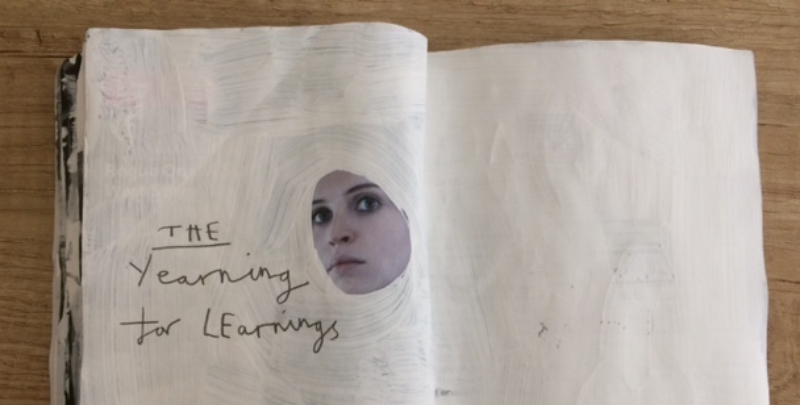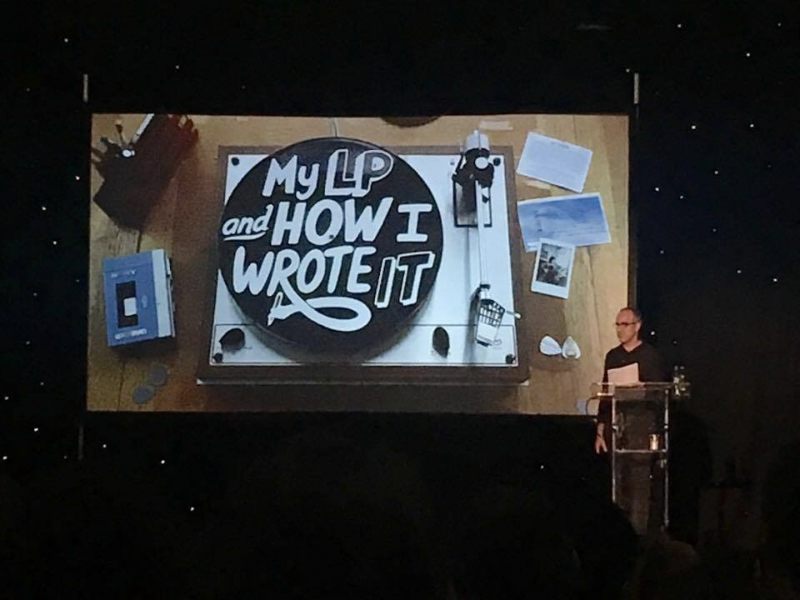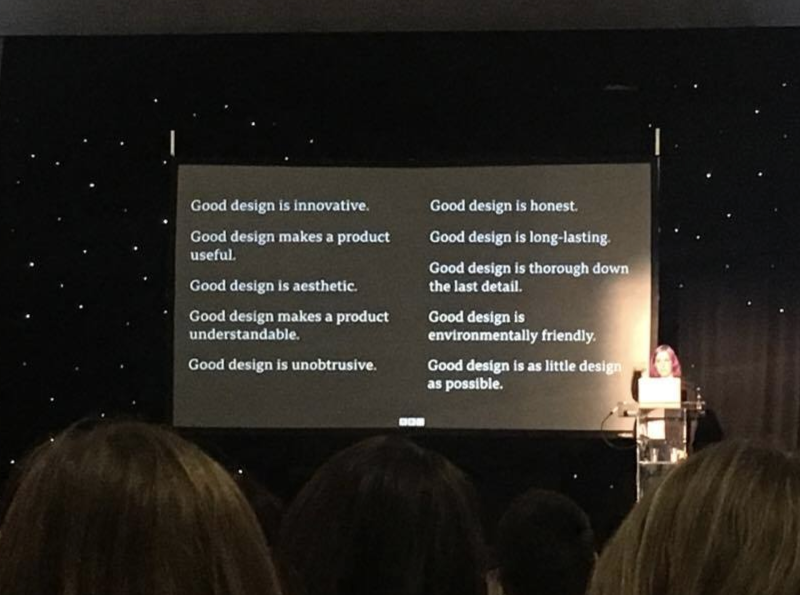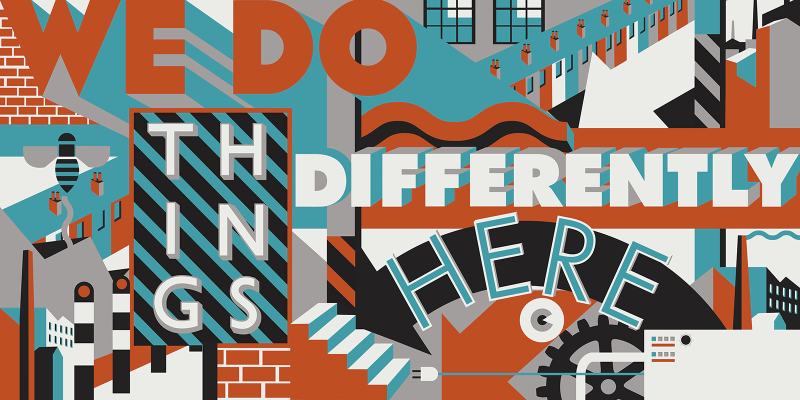On the spooky-for-some Friday 13th, Manchester was home to its fifth annual design festival.
The Principal Hotel opened its doors to hundreds of artists, designers, students and all around marketers for a varied range of inspirational talks. This year the IO design team arrived armed with sketchbooks and coffee to see what they could learn. The conference featured prolific people in brand, architecture, typography and service design. Here are a few of our favourite talks and what we took from them.

Naresh Ramchandani – Communications & Advertising Partner, Pentagram
‘Naresh didn’t go into detail about his work for Pentagram, instead he told us about writing and performing his own LP. Watching Naresh speak about his experiences of an alternative creative pursuit was so refreshing. It reminded me that sometimes, as creatives, we can get stuck in the nine to five pit of organised and regulated creativity for client work, pay-cheques and deadlines. All of which are great things to strive towards. But Naresh really helped me to remember that it’s OK to reserve some energy and to experiment outside of agency life to develop personally and learn new skills. Therefore, resulting in more creative satisfaction and happiness all of which then have a more positive knock on effect in a work place setting.’

‘His daring adventure to throw off other people’s opinions of why he shouldn’t, or couldn’t create an EP didn’t seem to faze him too much. I found that the love and the desire he had to just try was overtly inspiring and a fantastic indication that we should all push the boundaries of our own creativity and not fear any hurdles that lie in the way of completing them, no matter how outrageous we may initially perceive them to be.’
– Courtney Hobbs, Lead Designer
Louis Mikolay – Senior Designer, North Design
‘Louis Mikolay’s talk about North’s creative process when tasked on the re-brand for the Science Museum was very interesting. It was the first time the Science Museum branding had been changed in seven years, and upon being unveiled the re-brand received some controversy in the creative community on social media. The brief was part of a larger branding change that included other institutions such as The National Railway Museum and The Science and Media Museum in Bradford.’

‘I admired that despite the backlash received initially on Twitter, the studio stuck to their beliefs and eventually produced a result that pleased both the client and a large chunk of the industry. One of the biggest names to submit an initial negative response on Twitter was Johnson Banks, saying that it was “a bit of a clunker”. The agency later like many backtracked and said, “we can see the idea”. It showed that it’s important to stick to your guns, even if people don’t completely understand your plans.’
– James Ward, Designer
Jane Murison – Head of User Experience & Design at the BBC
‘Jane Mursion was great. She spoke about the detrimental effects and highly addictive nature of the internet and specifically social media platforms and smartphones. The dangers of creating content purely to keep people scrolling can deepen biases, strengthen societal divisions and create ever tighter echo chambers (she used Brexit and the General Election as an example of this and how unknowingly each of us was tailoring the information we were exposed to). She spoke about how the internet is increasingly engineered in such a way that we as users customise our user experiences to suit what we think it is we need/want/feel. So, over time we get to a point where we are seeing and experiencing more and more of the same thing. As a consequence, we experience less and less of what lies outside our spheres of interest or points of view. Does this make it increasingly difficult for us to reach well-informed opinions?’

‘Her talk acted as a very poignant reminder that we as designers and contributors to the internet have a responsibility for shaping how the internet affects us all. We play a key role in ensuring that what we create for online distribution is of quality and benefit to society as a whole.’
– Lucy Howarth, Designer
Emily Forgot – Graphic Artist & Illustrator
‘Emily Forgot’s talk showed off a varied range of colourful work and a few holidays snaps, as her talk centred around ‘time off and other happy distractions’ and how they’re important for your creativity. I found Emily Forgot interesting because she seems to have dipped her toe in everything, including illustration, retail display, print design and visual identity. Her style is very eclectic which she said was rare for an illustrator. But while she differs her style with each client she always manages to put her own signature spin on it.’

‘She talked about how important it is to enjoy your practice but still take time away from that environment to let your creativity fester. A quote that really spoke to me was ‘I want to make work that I’m satisfied to be making, then I think that satisfaction spreads to others.’ This is something we can all apply to whatever we create for clients.’
– Jessica Kadel, Designer & Writer
To speak with any of our designers to hear about what they learnt, get in touch.
